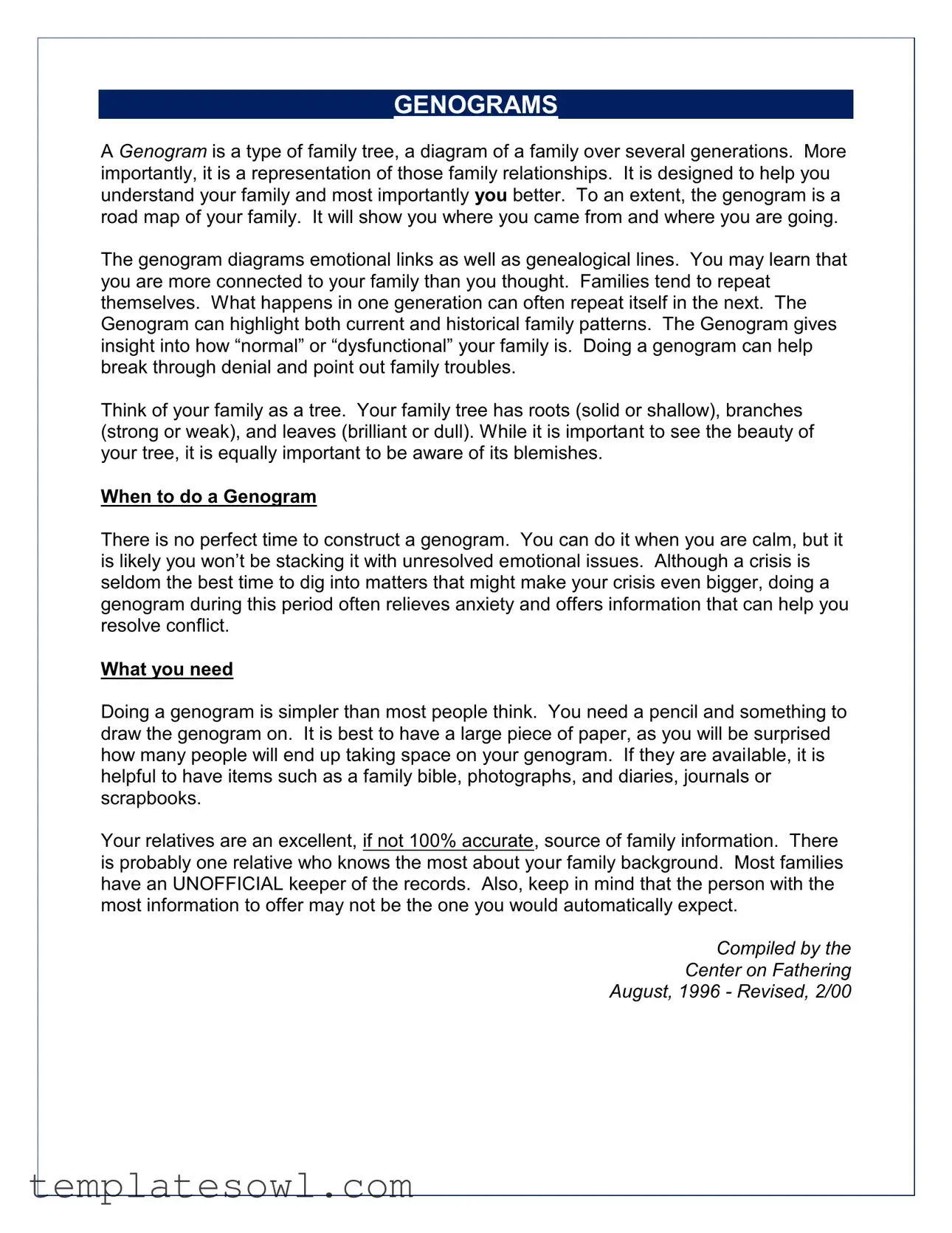What is a Family Genogram?
A Family Genogram is a visual representation of your family tree that includes multiple generations. Unlike a traditional family tree, it highlights family relationships and emotional links. This diagram serves as a roadmap to help you better understand your family's dynamics and history.
Why should I create a Genogram?
Creating a Genogram can provide valuable insights into your family's patterns and relationships. It allows you to see how behaviors, issues, and dynamics may have repeated across generations. This understanding can help you identify cycles that you may want to break and inform how you approach your own life and relationships.
When is the best time to create a Genogram?
There is no universally perfect time to construct a Genogram. While calm moments might allow for clearer thinking, times of crisis can also be appropriate. Engaging in this process during turbulent times may lead to relief and new perspectives that assist in conflict resolution.
What materials do I need to create a Genogram?
Creating a Genogram is straightforward. You need a pencil and a large piece of paper for sufficient space. Additionally, resources such as family bibles, photographs, diaries, or journals can enrich the information depicted in your Genogram. Gathering insights from family members is also crucial.
Who should I involve in the Genogram process?
It's beneficial to involve family members who are knowledgeable about your family's history. Often, there is a family member recognized as the unofficial keeper of records. This person may not be who you expect, so reach out to various relatives for a comprehensive view of your family dynamics.
Does a Genogram help in identifying family issues?
Absolutely. A Genogram can illuminate both normal and dysfunctional aspects of your family. By visualizing these patterns, you can break through denial and better recognize underlying family troubles that might need addressing.
Can a Genogram reveal emotional connections?
Yes, a Genogram not only outlines genealogical relationships but also diagrams emotional connections among family members. It can highlight both strong bonds and strained relationships, giving you a fuller picture of your family dynamics.
How can I use the information gathered from a Genogram?
The insights gained from creating a Genogram can be transformative. You may choose to explore specific issues further or address patterns of behavior that you aim to change. This understanding can enhance family communication and personal growth.
What should I do if my relationships don’t follow typical patterns?
Families are diverse, and not all relationships conform to traditional patterns. If your Genogram reveals unusual dynamics, don’t be discouraged. It’s an opportunity for deeper exploration and understanding, which can lead to constructive changes in your family interactions.

